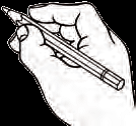Jolly Phonics course (FULL COURSE)
About Course
It is well known that a good level of literacy is needed in today’s world. This makes it crucial that all children should learn to read and write in their first few years at school. Literacy is a child’s key to a successful future; without the ability to read, children’s lives are frequently marred.
Before now, teaching children how to read and write was done by teaching them the names of the letters in alphabetical order. Both the teacher and the children did not understand how the reading and writing happen. The children were forced to memorize words as the teachers did not teach them any real skills for reading and writing! As a result of this, many children are left behind, many are struggling and many are not confident, independent readers.
Jolly Phonics is a Synthetic Phonics programme that solves the above problems. It shows the relationship between letter sounds. It starts with teaching each letter sound separately and purely. It then shows how to string the sounds together to make words and how words are pronounced.
Synthetic Phonics breaks the Alphabetical Code and unlocks the door to reading and writing!
Finally, both the teachers and children can see and understand how reading and writing work. Finally, it all makes sense!
Jolly Phonics uses the synthetic phonics method, which means that the letter sounds are taught first, on their own, and children are then taught to blend sounds together to say (‘synthesise’) the word.
The five basic skills for reading and writing taught in the Jolly Phonics are:
- Learning the letter sounds
- Learning letter formation
- Blending
- Identifying sounds in words
- Spelling the tricky words
Learning the letter sounds
In Jolly Phonics the 42 main sounds of English are taught, not just the alphabet. The sounds are in seven groups. Some sounds are written with two letters, such as ee and or. These are called digraphs. Both oo and th can make two different sounds, as in book and moon, that and three. To distinguish between these two sounds, the digraph is represented in two forms. This is shown below.
Group 1: s, a, t, i, p, n
Group 2: c k, e, h, r, m, d
Group 3: g, o, u, l, f, b
Group 4: ai, j, oa, ie, ee, or
Group 5: z, w, ng, v, oo, oo
Group 6: y, x, ch, sh, th, th
Group 7: qu, ou, oi, ue, er, ar
Story Telling and Actions
Each sound is taught with an action, which helps children remember the letter(s) that represent that sound. For the sound‘s’ for instance, they hear a story about going for a walk and suddenly seeing a snake. They weave their hands, pretending to be that snake, saying sss. In this way, each letter sound is taught with a story and has an action. As a child becomes more confident, the actions are no longer necessary.
Letter Sounds
Children should learn each letter by its sound, not its name. For example, the letter ‘a’ should be called a (as in ant) not ai (as in aim). Similarly, the letter ‘n’ should be n (as in net), not en. This will help in blending.
Letter Names
The names of each letter will be taught later when the children need to know the names of the letters for their literacy journey.
Order of the Letter Sounds
The letters have not been introduced in alphabetical order. The first group (s, a, t, i, p, n) has been chosen as the first group because these sounds make more simple two, three and four-letter words than any other six letters.
The letters ‘b’ and‘d’ are introduced in different groups to avoid confusion for the children.
Alternative Sounds
Sounds that have more than one way of being written are initially taught in one form only. For example, the sound ai (rain) is taught first, and then alternatives a-e (gate) and ay (day) follow later.
Learning letter formation
It is very important that a child holds their pencil in the correct way. 
The grip is the same for both left- and right-handed children. The pencil should be held in the ‘tripod’ grip between the thumb and first finger with the third finger serving as a bed to anchor the pencil. If a child’s hold starts incorrectly, it is very difficult to correct later on.
A child needs to form each letter the correct way. The letter c is introduced in the early stages as this forms the basic shape of some other letters, such as d. Particular problems to look out for are:
- the o (the pencil stroke must be anticlockwise, not clockwise),
- d (the pencil starts in the middle, not the top),
- there must be an initial down stroke on letters such as m and n.
Blending
Blending is the process of saying the individual sounds in a word and then running them together to make the word. For example, sounding out d-o-g and making dog. It is a technique every child will need to learn, and it improves with practice.
Level: All levels – Beginner, Intermediate and Advanced.
COURSE GOALS
At the end of this course, the student should be able to:
- Pronounce the 42 main letter sounds of the English language taught in Jolly Phonics correctly.
- Write all the letters that represents the sounds accurately.
- Effectively and easily string and build the sounds together to make words – blending for reading.
- Identify and recognise the sounds in written words so that the child can read them even without the teacher or any adult providing any help to the child and even if the child has not seen the words ever before!
- Effectively hear and recognise the sounds in spoken words, segment them and be able to write each sound down correctly for effective writing.
- Spell the words that are not phonetic effectively. These are called Tricky words.
- Effectively teach children how to read and write with the Jolly Phonics program, in a fun way, using stories and actions.
Course Content
Introduction to Phonics for teaching Children to read and write.
-
Introduction to Phonics for teaching Children to read and write.
04:49


